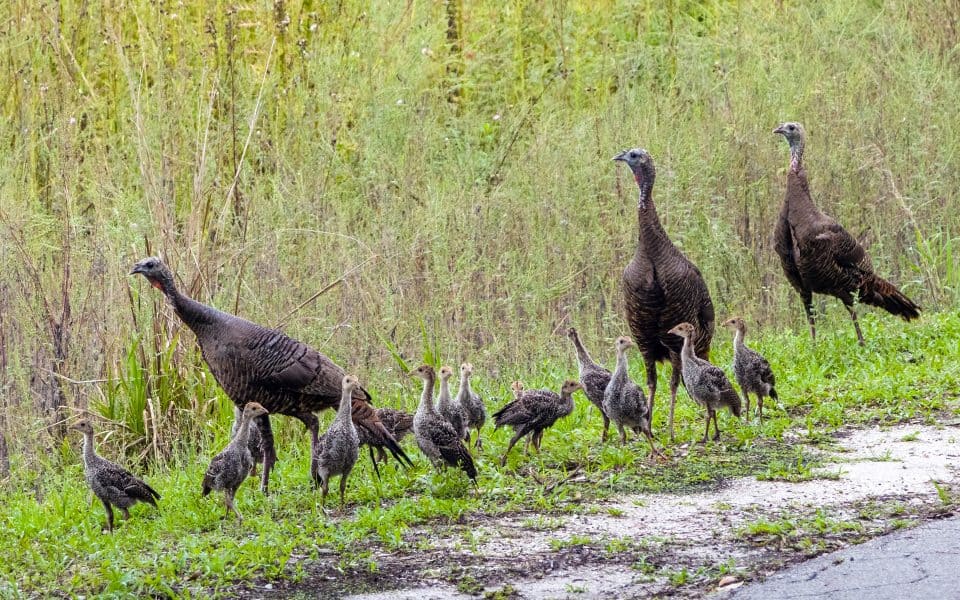When it comes to woodland wildlife, edges are at the top of the list for preferred habitat. Every species at one time or another spends time along edges. It really doesn’t matter if it is the edge of a forest, the edge of a grassland, the edge of a marsh…come to think of it, fish even like edges.
Where two types of habitat meet is generally where the highest diversity of food and cover is found. Many species of wildlife use edge habitat for nesting, feeding, and traveling. As good as edges are they are temporary. Always remember that the edge of a forest is only a young forest expanding into an adjacent grassland or cut over area. The process does not stand still. Called succession, the somewhat orderly and systematic changes that occur as bare dirt in a disked field begins returning to a forest is somewhat predictable.
As temporary as it is, gamekeepers should consider implementing forest edge improvement in their management plan, but with the understanding that the hotspot for deer or great turkey nesting site can quickly disappear. The idea is to freeze the process along the way or to set it back from time to time which means work on your part.
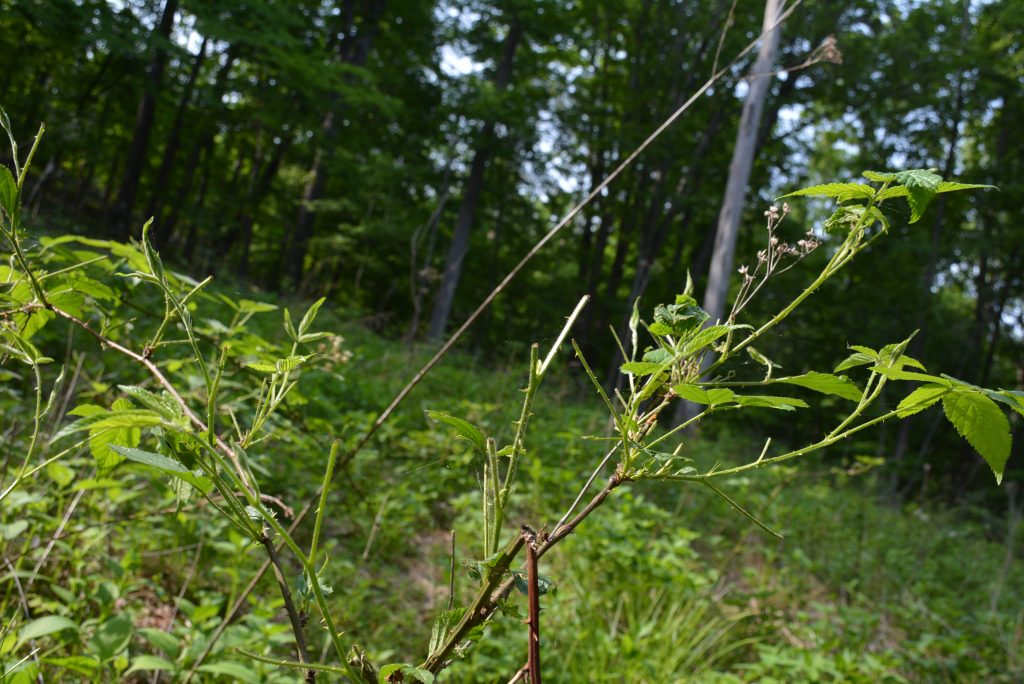
Richard Hines
Think about how and where edges naturally occur. We think of edges only happening around fields, but edges can be found in the middle of forests. Natural events such as tornados, insect damage, fires, or a downburst from thunderstorms are among a long list of natural events that create edges and set back succession. Whether you want it there or not, old Mother Nature will create edges. Picking your own spot is beneficial and can enhance your existing foodplots.
Where to Create or Improve Edges
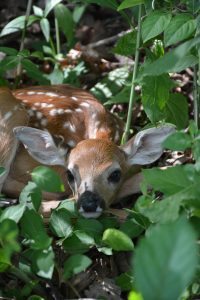
Richard Hines
The first places to consider a new or improved edge are your primary food plots. If your place is like many, these have been a part of a long-term management plan. Over time you have clipped and mowed keeping limbs out of your woodland openings and there is a good bet you now have what I call an “abrupt edge.” The woods immediately stops and your food plot begins, a straight line that reminds me of a cliff. If you investigate you see the edge of the woods is brushy with limbs extending to the ground but when you walk into the edge, there is little or no ground vegetation. The taller trees have shutoff the needed sunlight reaching the forest floor which is as bare as a kitchen floor.
An ideal edge should be a gradual stair step effect that creates what is called a “feathered edge.” Forbs and or grasses on the outside, followed by small shrubby growth, small saplings, maybe some blackberry briers, all of which blend into the adjacent mature forest. Research shows that the nesting success of numerous species of birds including turkeys is far greater along “complex” edges — those with multiple layers of vegetation. Simple edges or those that are abrupt provide only minimal layers of vegetation.
How to Create a Feathered Edge
There are several ways to create or develop a feathered edge. Mechanical means include using a chainsaw and dropping trees back from the edge. I have seen some edges cutback 15 to 20-feet, but if you can spare the space go back 20 to 50-feet. It really depends on how much land you have. If you have some abrupt edges, but these sites hold some of our better oak trees, use your best judgement. You still want to maintain your woodlands for food and cover but also maintain future hard mast producing species such as oaks.
The main goal of forest edge improvement is to increase available food and cover where different habitat types meet. The technical term is “ecotone.”
A good ecotone has a variety of vegetation types and layers. From the shortest herbaceous vegetation to the tallest trees. Multiple layers present in vegetation provide more places where wildlife can feed, find nesting, resting, and escape cover.
The shortest or outer most part of the edge is the field or foodplot. This section can be maintained by mowing, disking, mulching, and possibly use of herbicides to control aggressive woody vegetation. In this situation, plants are naturally occurring, and no planting is needed.
Hen turkeys will choose these areas for raising their broods. They prefer areas with increased ground cover that is also short enough so the hen can see over the top. Numerous weedy species and native grasses such as bluestem all provide ground cover without serious loss of visibility for the hens.
During the day, hens will take their broods along these feathered edges on foraging trips as they look for bugs, but in all cases, close enough so they have the ability to “duck into cover.” Hens don’t need to be on the edges of forests, as they will also use natural gaps in the forest where trees have fallen to also create early successional growth.
Hens that have been radio tracked show they don’t necessarily have to be in the actual edge if it is within 200 to 400 feet, this is close enough. For those of you with smaller tracts, look at aerial photos and see what is available around your property, if other landowners have abrupt edges, create the missing link on your land.
For gamekeepers who are managing in pine forest habitat, burning is recommended, but you might consider increasing burn rotations to a minimum of three years to promote more plant diversity. In all cases, make observations and take notes on where nests are located, or broods are feeding and adjust your management plans accordingly.
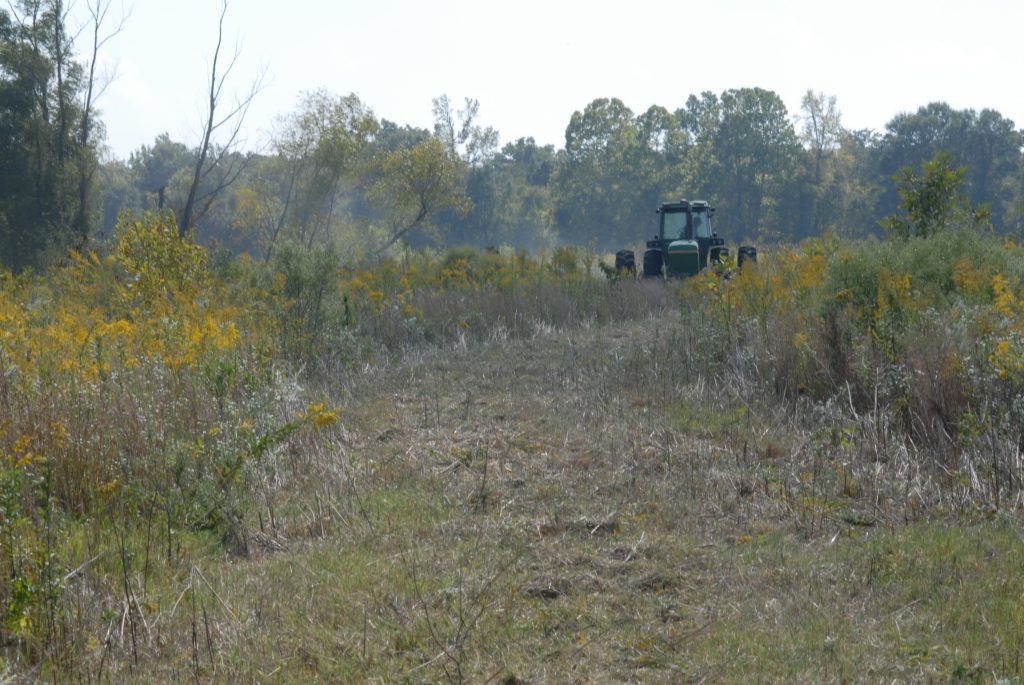
Richard Hines
To speed up the process and assure you get a good selections of food items, edges can also be planted with a wide variety of plants. I prefer a combination of native crab apple, plums, mulberry, persimmon, and cherry. All of these are soft mast species and will be consumed by deer, turkey, and many songbird species.
For short intermediate cover between the well maintained foodplot and the brushy portion of the edge, look at planting and maintaining some native wildflowers such as purple coneflower, bergamot, and black-eyed Susan. Pollinator mixes are a perfect choice. If some portions of the edge remain wet through most of the year, cardinal flower is a good fit. Using native wildflowers is a long-term project but once established the numbers of insects you will see is incredible, and the more insects, the more food for turkey poults and the better the pollination to your plants!
If you go to local nurseries or other sources, under all circumstances avoid exotic or invasive plants. Edges are great for wildlife, but they provide a toehold for exotics and invasive plants if you let them in. Kudzu, an introduced plant from the Far East remains a serious pest for forests and it does well on edges. If you are in doubt on which species to not use, contact your local wildlife agency for local recommendations if you are planting shrubs or trees.
The minute you decide to abandon an edge, succession will continue rolling with or without you — first with growth of foxtail, ragweed and later blackberry briers, sumac, and cedar. As these plants take hold, the hardwoods begin their march, moving out away from the woodlands. Once you decide to create or hold an edge, you must have maintenance plans to maintain what you want and in what stage you want the edge to remain.
Not All Edges Are On The Edge!
We generally think of creating edges along field borders but working an edge between two age classes of timber in the woods can be very effective. Cutting trees to create liner openings allows sunlight to start food production. Maybe there’s an old logging trail you don’t use. If a tractor can get between trees, disking will push succession back allowing a wide verity of annuals to grow. Bring in a mulcher and widen the edges back. Depending upon the road/trail’s orientation to the sun, many native plants will quickly take off providing either food or cover.
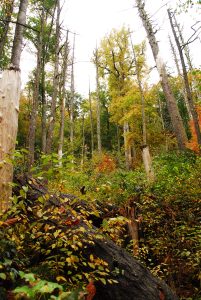
Richard Hines
If your edges are badly shaded in, there will be little cover on the ground. This means less food for fawns, poults, and other species. When there is a lower stem density, it enables predators to improve hunting efficiency. Raccoons, for instance, are “cast hunters,” in other words moving back forth inspecting the area. They do this until they find food which is why wider edges are better.
If you are feeding deer and/or turkeys in the immediate area, shut down supplemental feeding during peak nesting season. It won’t affect turkeys since they are feeding primarily on insects during this time of the year. Supplemental feeding increases raccoon numbers which congregates them in higher-than-normal densities.
Another key point of edges is they produce browse that deer utilize all months but especially during the fall and winter. A well-managed edge can improve existing foodplots by providing a wider choice of foods. Deer will come to the clover plot but having a nice selection of browse and a selection of soft mast such as blackberry, strawberry bush, or greenbrier adds diversity. Browse is also the component that may help hold deer during low mast production years. As winter is beginning to break, some succulent vegetation such as young shoots of grass and other vegetation will begin greening up. These first green plants never rank high in deer food studies, but these early plants are important to deer helping their digestive system as they begin shifting from hard browse and winter plants to green vegetation. Many of these plants will be found on edges.
Consider leaving old logs around the edges. Mushrooms will begin growing on logs and while mushrooms are not a make-or-break deal for deer, mushrooms are loaded in calcium and phosphorus. Provide as much diversity as possible along your edges.
Another location you might not consider for edge work are permanent right of ways (ROW), electric lines, gas lines, and other utility ROWs. These are permanent, but likely have developed abrupt edges. Maintenance of these ROWs is dictated by the utility companies who maintain the lines. No need to plan on doing any work within the ROW itself however, you might be able to cut a portion of your woods back from the ROW edge increasing edge habitat.
In many cases, electric cooperatives may work with you. One friend of mine met with his electric Coop and he now conducts the mowing and maintains a stand of native grasses in the ROW. Always check with these companies before doing any work!
Fawn production is always a concern when managing a tract of land and when you improve habitat for game species you are improving it for more than just them. Chances are you are also attracting predators such as coyotes.
Consider these points for your edge; fawn survival is increased as the basal area increases. In other words, more stems per acre the better fawn survival will be. If a doe chooses a site without sufficient shrub cover and grass cover within 40 to 75 feet of her fawning site, predation is also higher. Several of our old cedar thickets were perfect edges 10 to 12 years ago but the cover under those cedar trees disappeared. We cut back the cedar which allowed the blackberry to start over which hopefully helped reduce predation. The blackberry provides good stem density.
There are many ways to go about this and I have a hunch many of you may have lost your edge, if so, it may be time to back up and start over. Maintaining edges can be as detailed and time consuming as foodplots but learning the right time to disk, mow, mulch, use herbicide or chainsaw can enhance adjacent foodplots, improve fawning areas and crank up turkey nesting success. Your turkey and deer will thank you.

